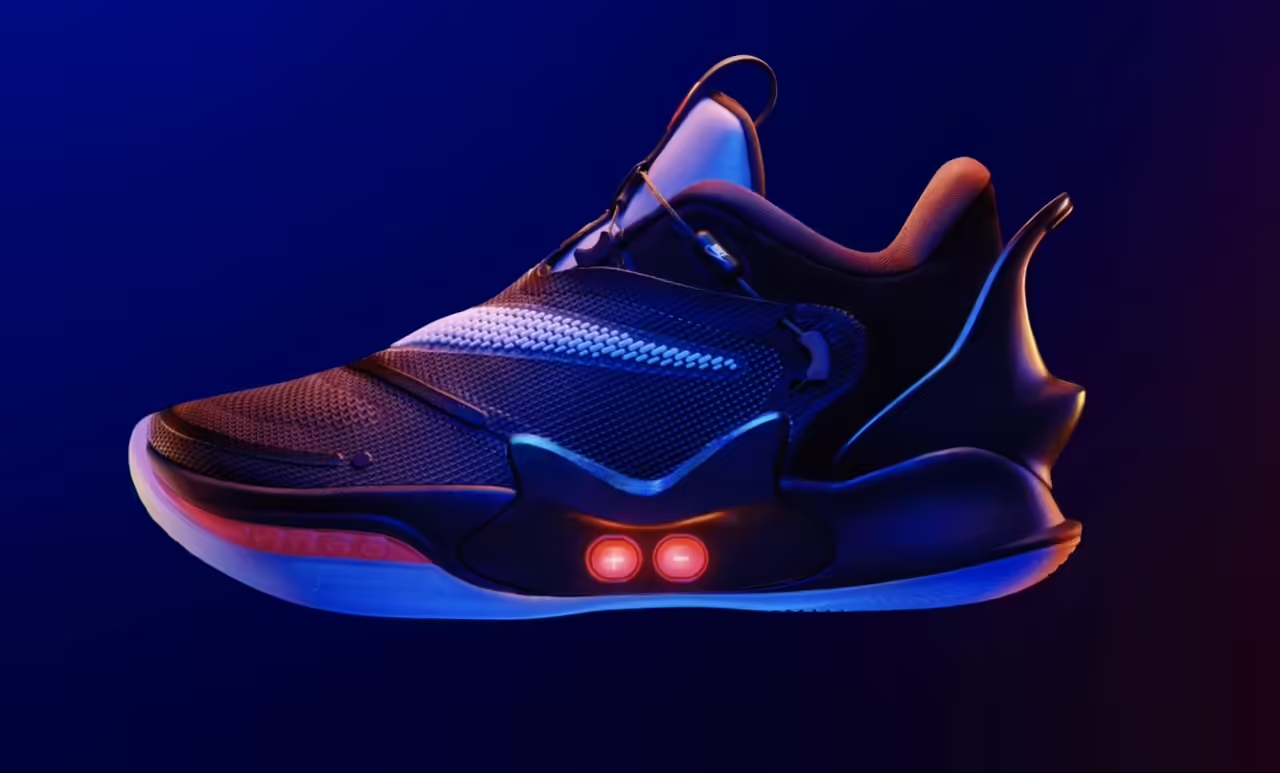
Footwear technology has experienced a fascinating evolution over the years, transforming the very essence of shoes and their manufacturing processes. From the early rudimentary designs aimed primarily at foot protection to the present-day sophisticated and technologically advanced models, the journey of shoe manufacturing has been nothing short of revolutionary.
Historical Perspective
The history of shoe manufacturing dates back thousands of years, originating from basic foot coverings made of natural materials like leather and woven fabrics. As civilizations progressed, so did the design and structure of footwear. Notably, the Industrial Revolution marked a pivotal moment in the shoe industry with the introduction of mechanization, enabling mass production and standardization.
Technological Advancements
The contemporary era has witnessed a surge in technological innovations within the footwear industry. This ranges from the utilization of cutting-edge materials such as advanced polymers, lightweight yet durable fabrics, to the application of sophisticated production methods like 3D printing. These innovations have not only enhanced the quality and performance of shoes but have also opened doors for customization and personalization, allowing consumers to have shoes tailored to their specific needs.
Impact on Performance and Comfort
One of the most significant impacts of technological advancements in shoe manufacturing is the improvement in performance and comfort. In the realm of sports, for instance, specialized footwear is engineered with advanced cushioning systems, superior traction, and tailored designs to enhance an athlete’s performance while minimizing the risk of injuries. This technological prowess has expanded to everyday footwear, ensuring better support, breathability, and ergonomics for wearers.
Sustainability and Innovation
With a growing emphasis on sustainability, the footwear industry has increasingly incorporated eco-friendly materials and production processes. From recycled plastics to biodegradable components, shoe manufacturers are embracing environmentally conscious practices. Moreover, technological innovation has facilitated the creation of shoes that serve multiple functions, incorporating smart features such as step tracking, temperature regulation, and health monitoring.
Future of Footwear Technology
Looking ahead, the future of footwear technology appears promising. Anticipate further integration of smart technology, perhaps with the incorporation of artificial intelligence and augmented reality into shoe design. Furthermore, the pursuit of sustainable and biodegradable materials will continue, striving for a balance between technological innovation and environmental responsibility.
Revolutionary Innovations in Footwear Design: Transforming the Way We Walk
The world of footwear design has undergone a profound transformation owing to revolutionary innovations that have shaped the way shoes are conceptualized and manufactured. From innovative materials to ergonomic designs, these advancements have redefined comfort, performance, and style in the shoe industry.
Materials Revolutionizing Shoe Design
In recent years, shoe designers have embraced a wide array of cutting-edge materials to push the boundaries of traditional footwear. Advanced polymers, breathable fabrics, and sustainable alternatives have replaced conventional materials, allowing for lighter, more durable, and function-specific designs. These materials not only enhance the shoe’s performance but also contribute to environmental sustainability, marking a significant shift in the industry’s approach.
Ergonomic Design Principles
The shift towards ergonomic design has been a game-changer in the world of footwear. Designers are increasingly focusing on crafting shoes that prioritize comfort and natural movement. Ergonomic designs take into account the anatomy of the foot, offering better arch support, cushioning, and weight distribution. This results in shoes that reduce strain and fatigue while promoting a healthier walking or running experience.
Specialized Footwear for Diverse Activities
The innovation in shoe design has also led to specialized footwear catering to a variety of activities. Whether it’s running, hiking, or specific sports, shoes are now meticulously engineered to meet the demands of different activities. Customized cushioning, traction patterns, and support structures are tailored to suit the unique requirements of each activity, enhancing performance and minimizing the risk of injury.
Integration of Fashion and Function
The convergence of fashion and function has become a defining aspect of contemporary shoe design. Footwear is not just about practicality but also about making a fashion statement. Brands are incorporating innovative designs, textures, and color schemes to create shoes that are both aesthetically pleasing and high-performing.
The Role of Technology in Design
Technology plays a pivotal role in the innovative design process. Advanced software allows designers to create and visualize intricate designs before manufacturing, enabling precise detailing and customization. Additionally, advancements in manufacturing techniques like 3D printing have revolutionized the production of prototypes and even final products.
Looking Ahead
As the footwear industry continues to evolve, it’s evident that the future holds even more exciting possibilities. Anticipate further breakthroughs in sustainable materials, adaptive designs that respond to individual needs, and the integration of smart technology in everyday footwear.
Cushioning and Support Technology: Enhancing Performance and Preventing Injuries in Athletic Footwear
Athletic footwear has evolved significantly over the years, particularly in the realm of cushioning and support technologies. These advancements have not only aimed to improve performance but have also been instrumental in reducing the risk of injuries.
Historical Perspective: From Basic Padding to Advanced Systems
The early days of athletic footwear primarily relied on basic padding and rudimentary support structures. However, with a deeper understanding of biomechanics and the impact of repetitive motion on the body, shoe manufacturers have introduced sophisticated cushioning technologies. These innovations aim to absorb shock, distribute pressure evenly, and provide stability during movement.
Air Cushioning and Gel Systems
Among the notable innovations, air cushioning and gel-based support systems have significantly impacted athletic shoe design. Air-based cushioning systems, pioneered by certain brands, employ encapsulated air pockets within the shoe’s midsole to offer enhanced shock absorption and responsiveness. Similarly, gel systems strategically placed in specific areas of the shoe aim to provide targeted support and cushioning for high-impact zones, such as the heel or forefoot.
EVA Foam and Adaptive Support Structures
The introduction of EVA (ethylene-vinyl acetate) foam as a primary material in midsole construction has revolutionized athletic shoe design. This lightweight, resilient material enables better cushioning and energy return, enhancing the overall performance. Moreover, adaptive support structures, including dynamic stability elements and customizable insoles, have become common in athletic footwear, aiming to adjust to the wearer’s gait and foot shape.
Focus on Injury Prevention
The evolution of cushioning and support technologies has also been heavily focused on injury prevention. Enhanced shock absorption and stability help reduce the stress on joints and muscles, thus decreasing the likelihood of overuse injuries. Shoes with appropriate cushioning can significantly minimize impact forces on the body, especially during high-impact activities like running or jumping.
Smart Shoes and Wearables: Pioneering Connected Footwear
The concept of wearable technology has transcended the confines of wrist-bound devices, extending to our feet with the emergence of smart shoes. These innovative footwear solutions are integrated with sensors, activity trackers, and other intelligent features, marking a new era in the evolution of footwear. This article aims to explore the realm of connected footwear and the myriad functionalities they offer.
The Rise of Smart Shoes
Smart shoes represent a fusion of technology and traditional footwear, embedding sensors and electronic components into the soles or insole systems. These sensors are designed to track various metrics, such as step count, distance covered, cadence, and even more advanced biometric data like foot pressure distribution and gait analysis.
Activity Tracking and Fitness Integration
One of the primary features of smart shoes is their ability to track activity and fitness metrics. They offer wearers the convenience of seamlessly monitoring their physical activity, enabling precise data collection for steps taken, calories burned, and exercise intensity. This integration encourages wearers to stay motivated and accountable for their fitness goals.
Biometric Insights for Health and Performance
Beyond basic activity tracking, some smart shoes delve deeper into biometric insights, providing valuable data on a person’s foot strike pattern, balance, and even detecting potential irregularities in movement. This information is not only beneficial for fitness enthusiasts but also for athletes and individuals undergoing rehabilitation.
Integration with Mobile Apps and IoT
Smart shoes often pair with mobile applications, allowing users to access and analyze the data collected by the embedded sensors. Additionally, some models connect to the Internet of Things (IoT), enabling them to sync with other smart devices, further enhancing the overall user experience.
Advanced Manufacturing and Materials in Footwear: Pioneering the Future of Shoe Production
The landscape of shoe manufacturing has experienced a paradigm shift with the integration of cutting-edge materials and production techniques.
3D Printing Revolutionizing Shoe Manufacturing
One of the most revolutionary advancements in the footwear industry is the utilization of 3D printing technology. This technique enables the creation of intricate and precisely designed shoe components, offering unparalleled customization and design possibilities. From midsoles to intricate shoe uppers, 3D printing allows for intricate detailing and tailor-made designs, contributing to both aesthetics and performance.
Technical Fabrics Redefining Comfort and Function
The integration of technical fabrics in shoe design has redefined the very notion of comfort and functionality. These fabrics, engineered for breathability, flexibility, and durability, provide wearers with an enhanced experience. Seamless uppers, moisture-wicking materials, and innovative weaves contribute to a more adaptive and comfortable shoe that supports the natural movement of the foot.
Sustainable Materials for Ethical Footwear
In an era prioritizing sustainability, the use of eco-friendly and recycled materials in footwear production has gained significant momentum. Shoes crafted from recycled plastics, organic cotton, and bio-based materials reduce the environmental impact while promoting a more sustainable manufacturing process. Brands are increasingly focusing on creating shoes that are not just stylish and high-performing but also environmentally responsible.
Hybrid Materials and Innovative Composites
The exploration of hybrid materials and innovative composites has further expanded the horizons of shoe manufacturing. These materials combine the strengths of various components, such as marrying traditional materials with high-tech elements to create shoes that are lightweight, durable, and adaptive to diverse environments. The result is footwear that strikes a balance between performance and durability.







